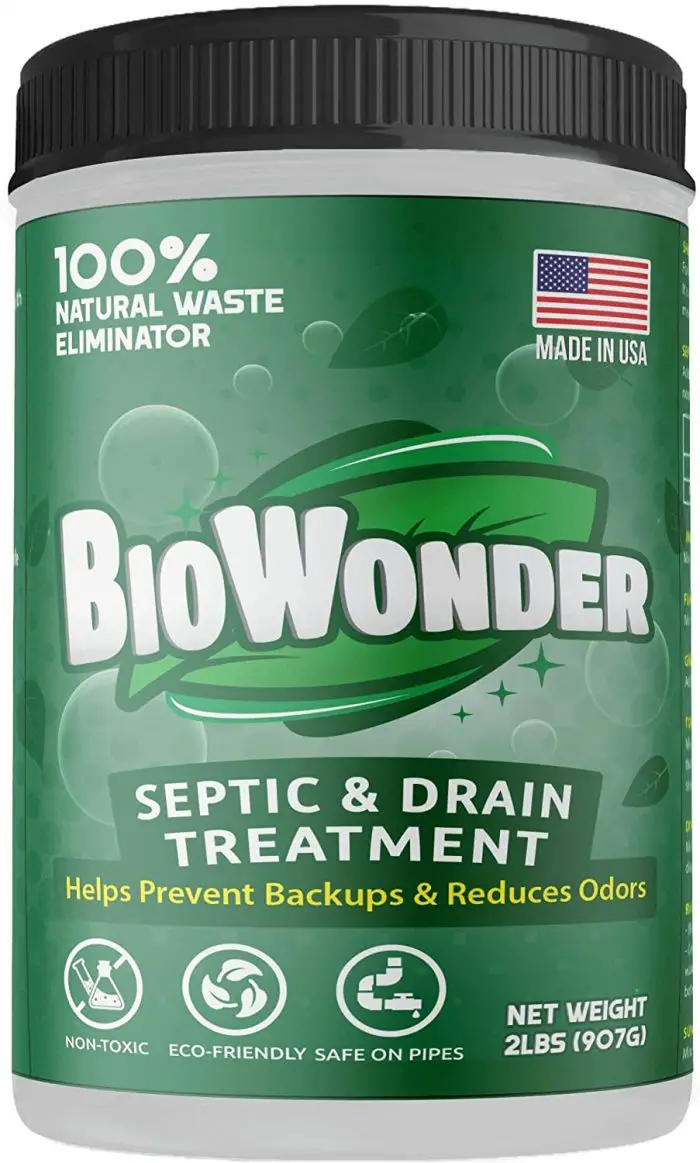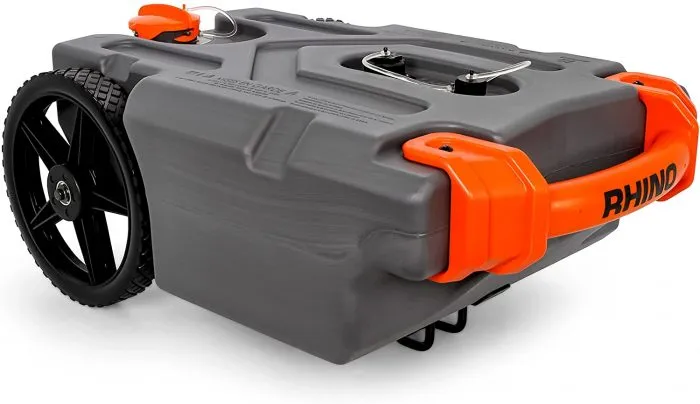There are lots of options available when you decide to choose a septic tank for your home.
Firstly, choose a tank that has the right capacity for your home. I use the BioWonder Septic & Drain Treatment.
After doing that, make sure the tank is reliable and can last long.
Essential Septic Tank Kits and Products We’ve Tested (Recommended)
Our pick:
Do you treat waste before allowing it to absorb into the ground, homemade septic tanks come in many sizes and shapes, it all depends on what you want.
It is made up of plastic or concrete; an adequately built Homemade Septic Tank can last up to 20 to 35 years with proper maintenance.
It may look easy to build, but it is time-consuming, with the help of a septic tank it can help you save hundreds to thousands of dollars in the process.
Homemade Septic Tank 55 Gallon Drum (Step-by-Step Checklist)
1. Get Permits before digging
Before you build any septic system, check the local health department and county government offices first to determine if your house location is right to build a septic system.
If you have been given the go-ahead, note any requirements and purchase any permits that would give you the right to build.
Read, Understand, and Follow the septic system requirements given before the construction process, or you may end up building it over again if the requirement is not met.
2. Plan your site early
Keep these in mind; you’ll have to decide on the place to put the septic tank and drain field: sometimes it requires soil testing to determine the drainage ability of the soil also the property’s seasonal water tables.
The health departments and planning boards have to test and approve the soil for the septic system.
The health departments and planning boards will also dictate how deep the drain field pipes and the septic tank should be placed.
Also, determine the size of your Homemade Septic Tank that will be needed. Figure 55 Gallon Drum per person per day.
For example, a family of four would need 55 x 4 gallons or a total septic tank size of 220 gallons.
Always try to be safe and figure an extra 100 gallons per day to account for miscellaneous users and visitors.
If possible, use an 800-gallon tank so the sludge won’t have to be pumped out as often as a smaller tank would require.
Mounting Your Homemade Septic Tank Drum (Instructions)
Step #1:
Dig a hole hire or someone to dig in line with the bathroom 10 feet far from the main structure that needs a septic tank.
Dig up to 8 feet or more to achieve good gravity flow when you flush the toilet and to prevent blockage.
Step #2:
The next step is to Dig a trench directly in front of the hole away from the structure about 2 feet down, and 10 feet in length. This will be your leach line.
Step #3:
Take a jigsaw, and cut a hole 4 inches below the top and in the side of the plastic barrel to fit the leach line which is a 10-foot-long, 3-inch-diameter PVC black pipe. The hole should be full enough for the pipe.
Step #4:
Place the 55-gallon plastic barrel slowly and gently into the hole and fit the black PVC leach-line pipe.
You have to cover the leach line with plastic also with a thick layer of cinders. Backfill the leach line; you can use the dirt you removed while digging earlier.
Step #5:
Fit the 10-foot section of solid PVC pipe from the structure into the bunghole at the top of the barrel or drum.
Cover the barrel or drum lid with plastic, and Backfill the leach line, you can use the dirt you removed while digging earlier.
Are you allowed to install this septic system on your property, well, it all depends on where you reside and state building regulations.
In the 63 counties in Colorado, with the change of regulations yearly, and rules and regulations varying from one inspector to another, it’s never possible to know if you can install this septic system on your property until these factors are met.
The primary source of information is our local county building department on if it is possible to install according to local regulations.
General septic system guidelines and various types of waste treatment
Every septic system has two major components; they are: Leach Field to dispose of liquid and Septic Tank to catch solids.
Cesspools septic system allows direct discharge of sewage both liquid and solid into the pit.
The perforated or pond tank where effluent leaches and evaporates down to the soil while the solids remain. Septic tanks can use one of seven treatment area designs to dispose of effluent:
Leach Pits
Leach Pits are gravel-filled holes, with a perforated tank in the center for discharging effluent.
Drywells are a no-pump passive solution for small/odd lots where a long leach percolation field is not desired or possible.
Leach pits have the advantage of surface area around their side to dispose of water in the right soil types.
Make your leash pit has additional capacity to accept massive surge at a time by adding a dry well to a leach pit.
Always give the distance of eight or ten feet of undisturbed soil space between pits to ensure total effluent treatment and percolation.
Leach Fields are trenches dug in the yard and get filled with a foot of 3/4″ — 1-1/2″ gravel and about four-inch diameter pipe.
The pipe-in-gravel leach line should be appropriately covered with geotextile fabric and then backfilled with the soil dogged out.
Effluent is sent to the leach field with at least a 1/8 inch per foot drop and then is dissolved into the soil with all of the leach field pipes being at the same level.
Chamber Systems are real advancement in leach field design and arched panels in the trench. Effluent is sent into this large open area under the yard; the entire bottom of the chamber is now open.
With no gravel inside, the ample air helps to keep the leach field soil healthy and aerobic.
Pressurized Mound Systems usually use an electric pump to force effluent into elevated mound systems and beds or chambers, distant trenches.
Distribution of effluent to smaller leach field sizing and better treatment of the wastewater is critical.
Drip Beds or Evapotranspiration are pressurized systems with small nozzles or holes for even distribution of wastewater; it is prone to plugging from calcification of the nozzles.
In those places where there is no snow cover in the winter, long shallow trenches can be run through the yard; it sends the wastewater into the root zone near the surface.
The plants transpire water through growth, and some water inside evaporates to the surface, with a smaller portion of effluent percolating down into the water table.
Cesspits, Cesspools, and Lagoons are human-made ponds where the effluent evaporates and percolates, and is assisted by a bubbler or fountain.
Usually, it’s reserved for high clay soil areas where percolation is difficult; lagoons are lined to avoid percolation in a fragile region, where evaporation is the only way of disposal.
The standard practice of any cesspool or lagoon is six-foot fencing and a locked gate due to the legal liability from safety issues.
Conclusion
When it comes to your homemade septic tank 55-gallon drum, there are a few warnings and tips to have at the back of your mind.
Here: Make sure you add natural septic digester to your temporary septic tank and do not park or drive your vehicle over the temporary septic tank.



